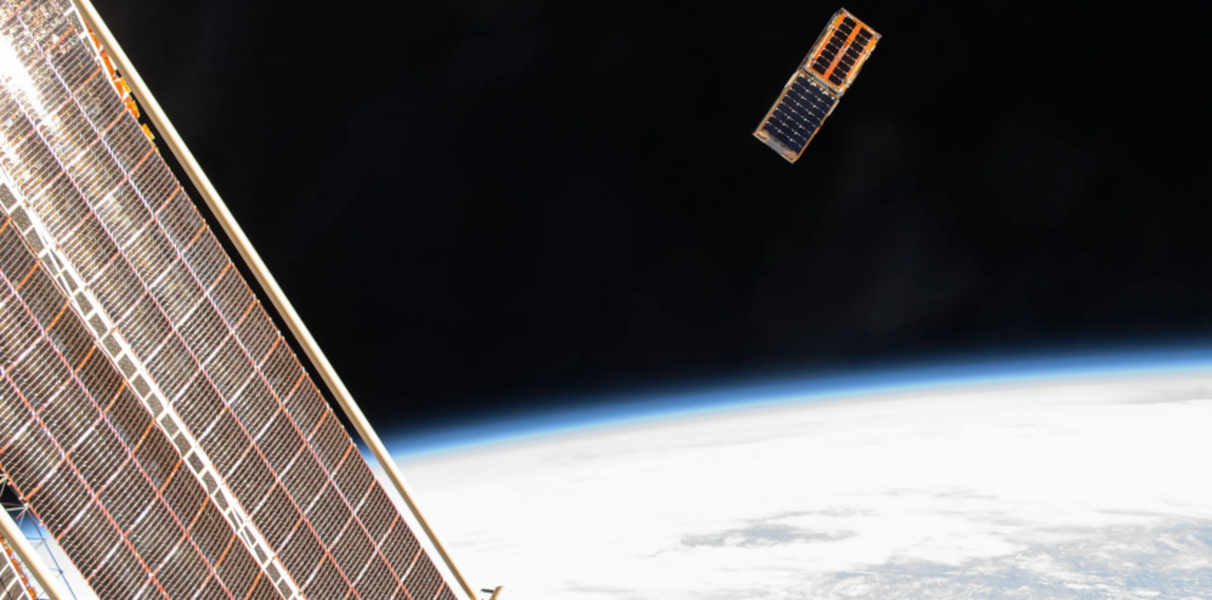
 Credit: NASA/Matthew Dominick
Credit: NASA/Matthew Dominick
Big Blast in a Little Box
The gamma-ray sky bears constant watching - all sorts of interesting events flare into prominence then fade. Most of these events have to do with black holes - existing black holes voraciously feeding, or dying stars exploding, collapsing and giving birth to new black holes. Or dead ultradense stars violently crashing into each other, creating gold and other heavy metals. Watching for bursts of gamma rays began in earnest with the Vela satellites, designed to detect powerful explosions from earth, which instead discovered powerful explosions in deep space. Other notable monitors include the Compton Gamma-ray Observatory, one of NASA's Great Observatories, and the Fermi Gamma-ray Space Telescope. On April 18, 2024, this fleet was augmented by a small but powerful spacecraft, Burstcube. Burstcube is a shoe-box sized "cubesat", a type of small satellite packed with minaturized technology performing almost as capably as much larger satellites for a fraction of the cost. Burstcube, shown in the image above shortly after deployment from the International Space Station and framed by the earth and an ISS solar panel, was designed to detect, locate, and study short gamma-ray bursts, and, after some technical issues were overcome, saw its first GRB, named GRB 240629A, in the southern constellation of Microscopium. Scientists are eagerly awaiting more such discoveries from Burstcube, and hope for future discoveries from an entire fleet of small science payloads.
Published: September 16, 2024
<
HEA Dictionary ● Archive
● Search HEAPOW
● Other Languages
● HEAPOW on Facebook
● Download all Images
● Education ● HEAD
>

Each week the HEASARC
brings you new, exciting and beautiful images from X-ray and Gamma ray
astronomy. Check back each week and be sure to check out the HEAPOW archive!
Page Author: Dr. Michael F. Corcoran
Last modified Monday, 23-Sep-2024 16:33:03 EDT


